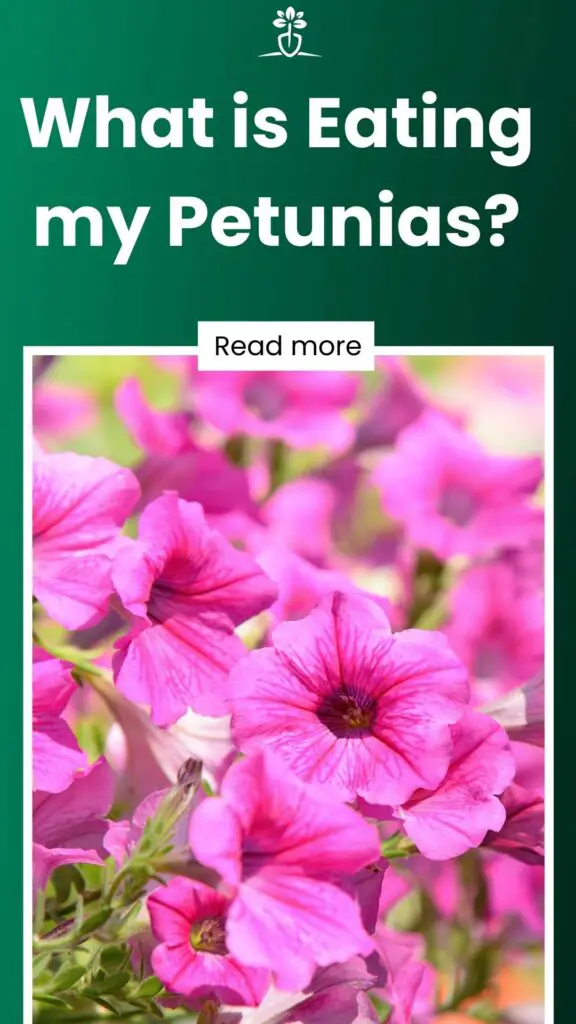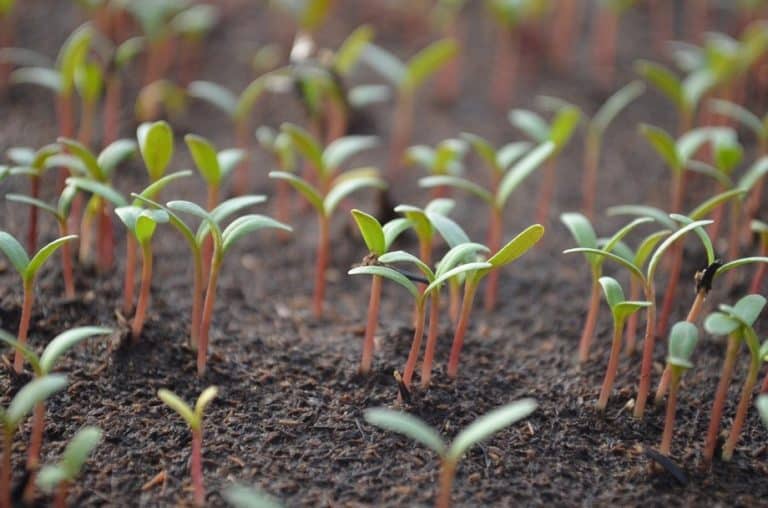What is Eating my Petunias?
Contents
What insects are eating my petunias?
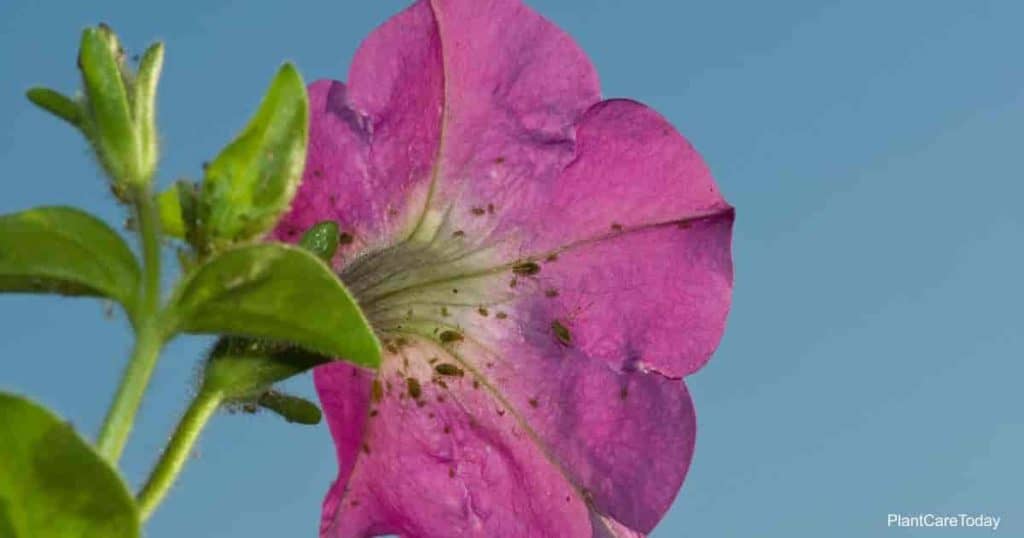
There are a whole host of bugs that could be munching on your delicate perennials. Leaf miners, tobacco budworms, spider mites, and aphids are all on the list of culprits. Let’s find out which one it could be.
Caterpillars
Petunias can be heavily damaged by two different types of caterpillars. The cutworm likes to munch on the flowers and roots of this plant.
The tobacco budworm is known to eat any unopened buds or petals. While the flowers can still emerge from these buds, they will bloom unattractively with holes in the petals.
Caterpillars are creatures of the night, greedily working their way through your hard work whilst you sleep unaware. However, they can be found under the lower leaves in the daytime, so it is a good idea to check if you have an inkling of their presence.
Remedy
Both species can be hand removed and can be drowned in a solution of soap and water. Coffee grounds and eggshells are also a preventative measure as they are usually avoided by worms.
Aphids
There are 500 different species of aphid.
Otherwise known as the greenfly or blackfly, these creatures feed on sap and nutrients from petunias through their tiny mouths. Some have toxic saliva which yellows the plant tissue and causes the leaves to curl.
Aphids are known to spread disease to other plants by feeding on infected foliage. Transmission of diseases from one plant to another is devastating to crops as by the time you start to notice any signs of deterioration; the plants are rarely salvageable.
Remedy
Neem oil is a general pesticide that is a popular choice when it comes to ridding the garden of insects. The natural ingredients used offer a good alternative to more toxic pesticides.
Birds are a natural predators and are a great addition to any garden ecosystem. Attracting birds to your garden won’t completely rid an aphid infestation, but it will help.
Mites
These pesky arachnids are hard to spot and their rapid rate of reproduction means you could be in for a hefty plant infestation if you do not act quickly.
There are several different types of mites and to make the matter worse, they are barely visible to the human eye. The cyclamen mite, for example, is less than 0.3mm long and is impossible to see without the use of a microscope.
Mite saliva contains an enzyme that is toxic to petunias which causes premature flowering and bud death.
Remedy
The most cost-effective way of dealing with mites is to make sure your petunias are regularly watered. Keep the soil around the plant moist as these insects flourish in drought-stressed areas.
Spraying the underside of the leaves with a hose is recommended as it will help to knock them off the plant. Doing this daily should vastly improve your mite infestation.
Leaf miners
Leaf miners are the larval stage of several insect species. They cause damage internally by creating tunnels (hence the word miner), in which they burrow and eat their way through the leaves.
The tell-tale trail of a leaf miner is identified as distinct white lines throughout the foliage.
The effects are not too detrimental to the petunia itself, however, the internal damage is exposed to bacteria which can destroy the plant from the inside out.
Remedy
Remove and discard any infected leaves. If you don’t want to remove them, squeezing them is an alternative method. This will kill any miners inside them, although it is difficult to know if the process has been a success because you won’t be able to see.
Thrips
These small, winged insects destroy petunias by puncturing the leaves and sucking up the nutrients. As well as causing irreversible damage to the plant, this can also pave the way for destructive, unwanted viruses.
The damage caused by thrips is known to stunt the growth of petunias. They like to feed on unopened buds which can cause the petals to be pale in color and/or deformed.
Remedy
Pruning the affected areas is helpful and you will want to get rid of any nearby weeds that may have a thrip infestation.
Sticky traps are highly recommended for ridding your garden of thrips. Much more so than general pesticides which seem to have little to no effect.
Snails and slugs
The most common sign of slugs and snails munching on your perennials is their signature silvery track. These garden gobblers tend to hide under leaves or in the soil during the day and come out to eat at night. Slugs and snails will eat plant material that is dead or alive but tends to enjoy feasting on newly sprouted greenery.
Slugs in particular often cause the worst of the damage by chomping through leaves, bulbs, and stems. They thrive in high moisture environments and can usually be found under trash cans, rocks and boards.
Remedy
You don’t have to spend a fortune banishing these critters from your flower beds. Eggshells and coffee are inexpensive, non-toxic deterrents that will keep any snail or slug at bay.
A wire barrier will deter snails and slugs as it sends a harmless jolt of electricity through them which they do not like.
You can manually pick them off but if not, they also like to feed on bran. This grain soaks up moisture leaving slugs dehydrated which will eventually kill them.
Are animals eating my petunias?
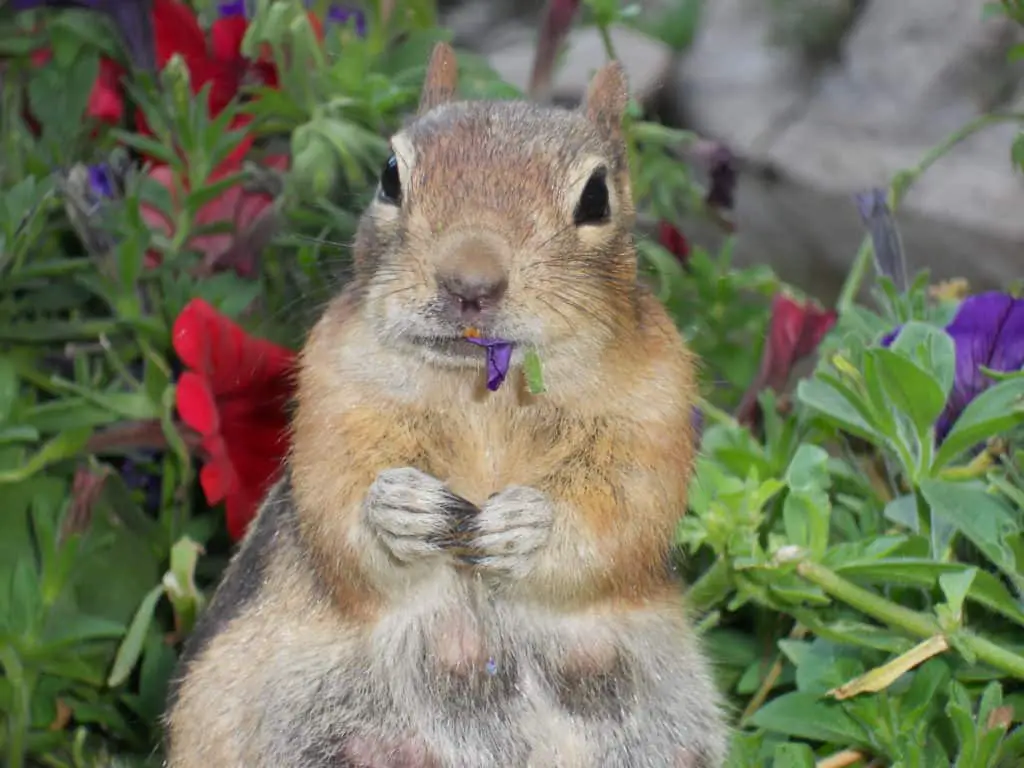
Depending on where you live then yes, certain animals do enjoy a nice plant-based meal!
Rabbits as well as deer love to munch on most flower beds when nobody is around, especially petunias. While they are adorable to watch, they are a nuisance and will keep coming back for more.
Erecting a wire fence around your beds or using tall planters will deter a rabbit from your garden as they are too small to get to them.
Sifting a homemade spice mixture over your petunias when wet will also prevent rabbits from eating them. Unless they like their food hot!
This method will also work for deer, which are also opposed to the scent of garlic. Eggs, deodorizer sticks, dish soap, and air freshener are high-quality deer deterrents.
Odors that emit bitter tastes are the least effective when dealing with pest control and odors that produce smells of sulfur, ie eggs, seem to work the most.
Metal garden ornaments such as wind chimes are known to scare away unwanted animals due to the sound they emit when moved.
Disease in petunias
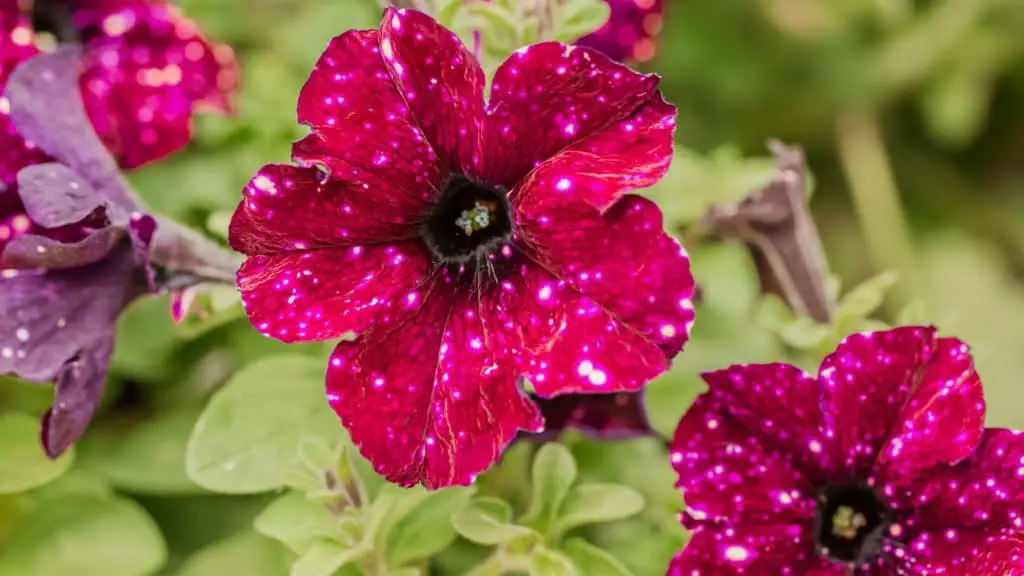
Phytophthora crown rot
This fungal disease occurs in areas that are overwatered or have poor drainage. The fungus itself develops in the soil, so once you start to notice your petunia deteriorating, it is usually too late to save. The symptoms of crown rot are wilted leaves, collapsed stems and you guessed it, a rotting crown or roots.
A good drainage system is recommended to balance moisture in the soil so that it is not too wet. If you feel your petunias can be salvaged, try digging them up and cutting away any damaged areas before washing the roots.
Botrytis blight
The common identifier of botrytis blight is brown or discolored spots that appear on the leaves and petals. Also known as gray mold, it usually occurs in plants around spring/summer time after long periods of wet weather.
Pruning your petunias and disposing of the dead plant parts properly will help. Cutting tools should also be sterilized to stop the spread.
Stunted growth
This happens when the soil is low in the micronutrient, boron. Sometimes the pH of the soil is either too low or too high which causes this deformity.
Most fertilizers include the vital nutrients needed for plant growth. However, depending on the type of soil and plant, sometimes these need to be supplemented. Weeds can also cause problems as they take nutrients away.
Powdery mildew
This common and easy-to-identify fungal disease appears as a powdery, white substance on the leaves and stems. It is most prevalent in areas where the conditions are warm and dry.
While deemed unattractive, powdery mildew is not too damaging. In severe cases, plant growth may be stunted but this can be prevented.
Remedy
Remove infected areas of the plant and dispose of them correctly. Don’t make the mistake of composting your clippings as the spores may then spread.
Invest in a fungicide that contains potassium bicarbonate, copper, neem oil, or sulfur. This should be applied frequently to prevent the spread.
To conclude, there are a variety of answers as to what could be eating your petunias. Unfortunately, these are sometimes out of our control and it is virtually impossible to rid your garden of all insects and diseases. So our advice to you is to keep doing what you love and don’t worry so much about it!
